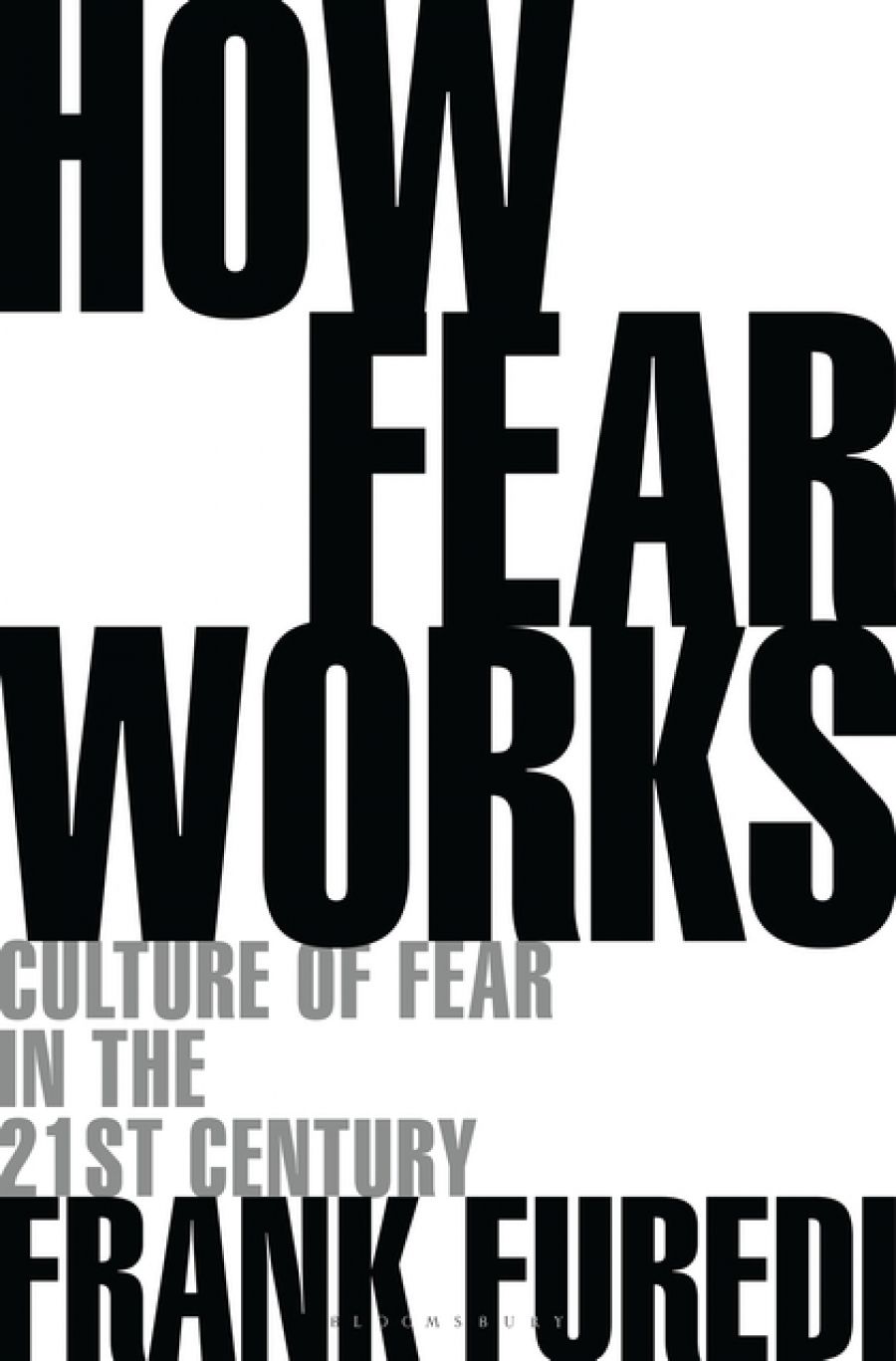
- Free Article: No
- Contents Category: Society
- Custom Article Title: Adrian Walsh reviews <em>How Fear Works: Culture of fear in the twenty-first century</em> by Frank Furedi
- Review Article: Yes
- Custom Highlight Text:
Fear has always been a dominant element of human existence, across all human societies, but has our attitude to it changed? It might be argued that our concern with threats has become more pronounced. Is the twenty-first century an especially fearful period in human history ...
- Book 1 Title: How Fear Works
- Book 1 Subtitle: Culture of Fear in the Twenty-First Century
- Book 1 Biblio: Bloomsbury, $39.99 hb, 306 pp, 9781472947727
The central socio-historical claim in the book is that we live in a world in which the ‘black arts’ of the politics of fear have undue influence upon our public policymakers. Ours is a world where fearmongers are more rampant than ever before. Furedi’s prime examples of fearmongering are concerns with what are often regarded as key issues of the environmental left, such as climate change, skin cancer, Frankenfoods, and the stigmatisation of those who feed their infants formula (though, interestingly, not the berating in the developing world of those who breastfeed). He argues that in all cases we are inflating the nature and range of threats faced by society; at one point he even suggests that ‘[n]ot since the Dark Ages has there been so much concern about the malevolent passions that afflict humanity’.
Furedi argues that we spend an unprecedented degree of emotional and rhetorical resources talking about fear; this rhetoric of fear is fuelled by a coterie of ‘professional fear entrepreneurs’ who spread what he refers to as the ‘teleology of doom’. Their rhetoric encourages the growth of a negative attitude towards future uncertainty and is underpinned by both excessively fatalistic views about human agency and exaggerated views of human fragility. It is worth noting here that Furedi is also opposed to drawing distinctions between legitimate and illegitimate forms of fearmongering – he regards it all as part of the ‘teleology of doom’. According to Furedi, the most distinctive feature of this culture of fear is the obsession with safety and with the minimisation of risk. He refers to this as the ‘safety imperative’ and claims that over the past forty years we have witnessed the transformation of safety into a fund-amental social value as well as the emergence of fear as a mental health issue.
What might be the ultimate cause of Western society’s alleged ‘cultural script of fear’? Furedi suggests it is the loss of faith in science and of Enlightenment values. We need to return to an Enlightenment perspective that is confident of humanity’s ‘ability to know, understand and ultimately control the future’.
The aim of the book, then, is to explain how the culture of fear works and, more significantly, how our culture might be transformed into one in which the general public is motivated by what humankind might achieve, and in this way avoid the fatalistic influence of the culture of fear. However, his arguments, in general, are not at all convincing. In particular, it not clear that our age is unique with respect to the fear of potential threats. Indeed, much of his own discussion – of, for instance, moral panics in the 1930s or witch-hunts in the fifteenth century – undermines his thesis that fear is a distinctive feature of the twenty-first century and thus key to understanding who we are. To be sure, we fear different things from our predecessors, but it is hard to see that we are noticeably more fearful than they were. If this is the case, then it seems unlikely that the concept of fear furnishes us with a genuinely insightful category for understanding our social world.
Secondly, his unwillingness to distinguish explicitly between well-founded and baseless fears is odd. Surely there are potential threats, such as climate change, about which we should be seriously concerned. It is also odd – especially given his praise for the Enlightenment and scientific reasoning – that Furedi should be sceptical about the findings of climate scientists. Admittedly, there are those in the environmental movement who are prone to anti-science romanticism, but that charge can hardly be levelled at the majority of scientists studying climate.
What does ring true in the book is his claim that our public institutions appear to be overly obsessed with safety. Why might this be so? While human beings have always been prone to misplaced fears, why has that anxiety expressed itself in the particular way that it has? This is the interesting socio-historical question. Unfortunately, on this subject, Furedi’s book leaves us none the wiser.


Comments powered by CComment